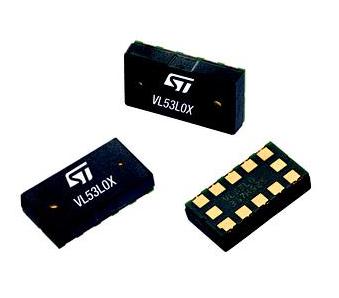The Latest Sensor Improves Hands-Free Faucets
June 22, 2016

A new time-of-flight sensor could offer a solution to the problem of balky, touch-free faucets in public washrooms.
STMicroelectronics' VL53LOX laser-ranging sensor uses time-of-flight (ToF) technology, rather than reflectance, to measure the proximity of a hand, wall, or article of clothing. As a result, it doesn't base its conclusions on the lightness or darkness of a nearby object. "Our sensor doesn't care about the reflectance of the target," Herve Grotard, photonics sensor marketing manager for STMicroelectronics, told Design News. "It only cares about the time it takes for photons to come back to it. So it doesn't matter whether the target is dark or light. It operates the same either way."

The new sensor represents a departure from infrared technology, which emits light and uses reflectance to measure proximity. "With conventional technology, if you wear white, it will see a lot of light coming back and say, 'This is a very short distance,'" Grotard said. Such sensors typically have difficulty with dark colors, however, he added.
The VL53LOX uses STMicro's FlightSense technology, well known for its application in laser-assisted auto-focus cameras. The new sensor extends the ToF measurement to 2m and is said to be accurate within about plus or minus 3%. It measures distance in under 30 msec, consuming about 20 mW in active range and drawing 5 muA in standby. The technology is more costly than IR, but less costly than ultrasonic or triangulation-based sensors, Grotard told us.
READ MORE ABOUT USER INTERFACES:
STMicroelectronics expects the VL53LOX to be used in hands-free applications, such as faucets, soap dispensers, hand dryers, and flushers. It can also be applied to gesture sensing and proximity applications, including wall detection and cliff detection in robotic appliances, such as vacuum cleaners and lawnmowers, as well as laptops, smartphones, drones, and Internet of Things (IoT) devices.
Ultimately, the technology's longer measurement ranges could even enable its future generations to be used in autonomous cars. "We're talking to partners about it," Grotard said. "But those applications are farther out, because they have to be automotive grade."
 Your Data. Get It. Protect It. Practical information on embedding sensors in 3DP, automation & inventory control, big data as a diagnostic tool, cloud storage and security risks, and more in the Industry 4.0: Smart Strategies for Data Collection and Protection track at Automation Technology, Sept. 21-22, 2016 in Minneapolis. Register here for the event, hosted by Design News’ parent company UBM.
Your Data. Get It. Protect It. Practical information on embedding sensors in 3DP, automation & inventory control, big data as a diagnostic tool, cloud storage and security risks, and more in the Industry 4.0: Smart Strategies for Data Collection and Protection track at Automation Technology, Sept. 21-22, 2016 in Minneapolis. Register here for the event, hosted by Design News’ parent company UBM.
Senior technical editor Chuck Murray has been writing about technology for 32 years. He joined Design News in 1987, and has covered electronics, automation, fluid power, and autos.
About the Author(s)
You May Also Like

.jpg?width=300&auto=webp&quality=80&disable=upscale)

